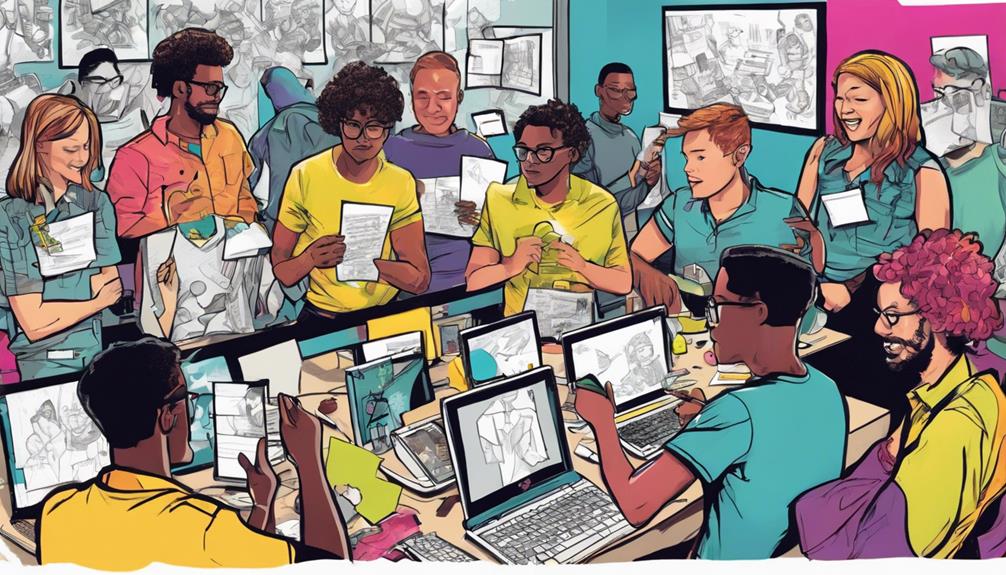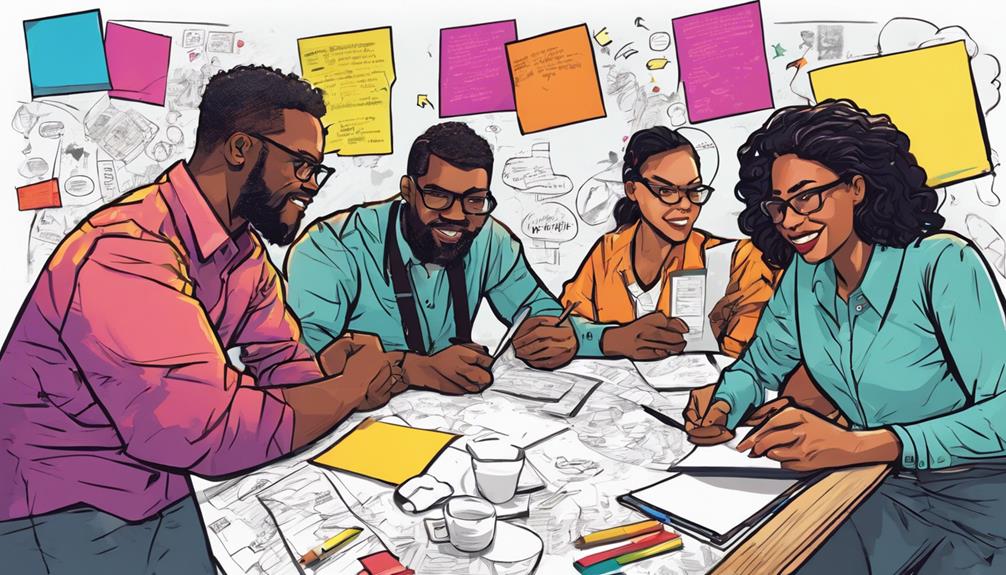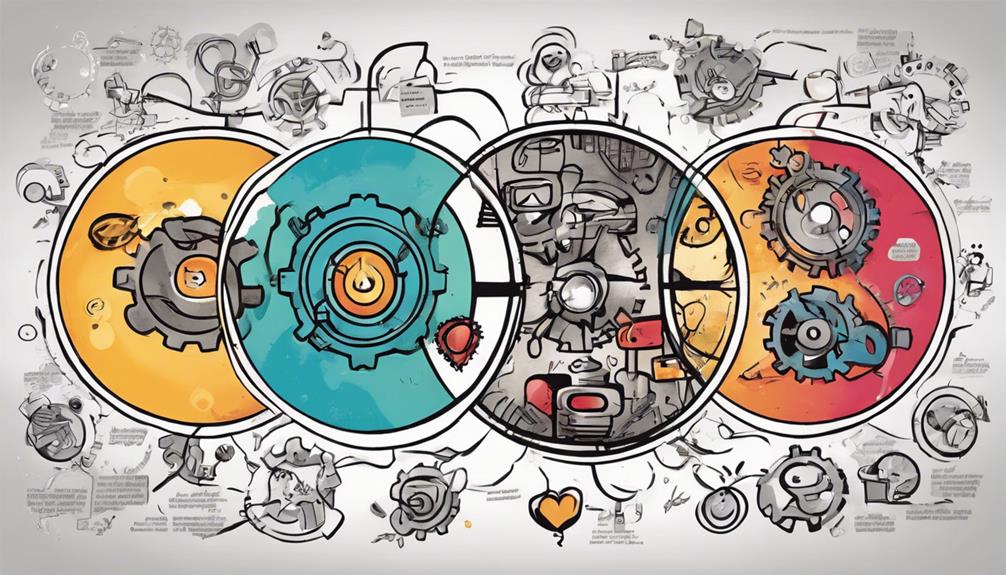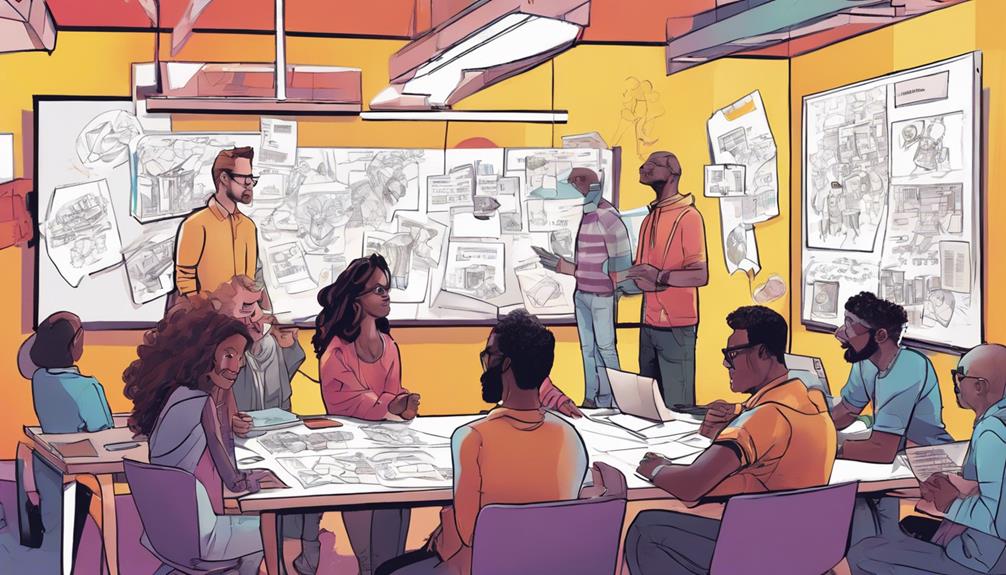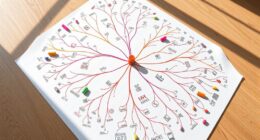Reveal the potential of Design Thinking, a transformative methodology emphasizing user-centered solutions and collaborative problem-solving. Prioritize understanding user needs, fostering empathy, and creating feasible, desirable, and viable outcomes. Plunge into the five stages of Design Thinking, frameworks, mindsets, and the unique aspects that set it apart from Agile methodologies. Embrace a creative iterative process that puts users at the core, leading to innovative solutions and meaningful experiences. Explore how successful companies like Google and Apple utilize Design Thinking for competitive edge. The journey into this powerful methodology awaits with insights on driving innovation and user-centric design.
Key Takeaways
- Emphasizes user needs and desires.
- Encourages cross-functional collaboration.
- Focuses on innovative and viable solutions.
- Prioritizes empathy and creativity.
- Drives meaningful user experiences.
Importance of Design Thinking
Understanding the significance of design thinking is crucial for businesses aiming to drive innovation and stay competitive in today's market. By placing the user at the center of the process, design thinking guarantees that solutions are tailored to address real problems effectively.
This approach involves identifying and empathizing with the user's needs, challenges, and desires to create innovative solutions that resonate with them.
Through design thinking, cross-functional teams collaborate to tackle complex problems creatively. By combining diverse perspectives and expertise, these teams can uncover unique insights and develop solutions that go beyond conventional thinking.
Companies like Google, Apple, and Airbnb have successfully utilized design thinking to drive innovation and achieve business success.
Design thinking emphasizes the importance of creating solutions that aren't only desirable for the user but also technically feasible and financially viable. By prioritizing desirability, feasibility, and viability, businesses can guarantee that their solutions meet user needs effectively while also being sustainable in the long run.
End Goal of Design Thinking
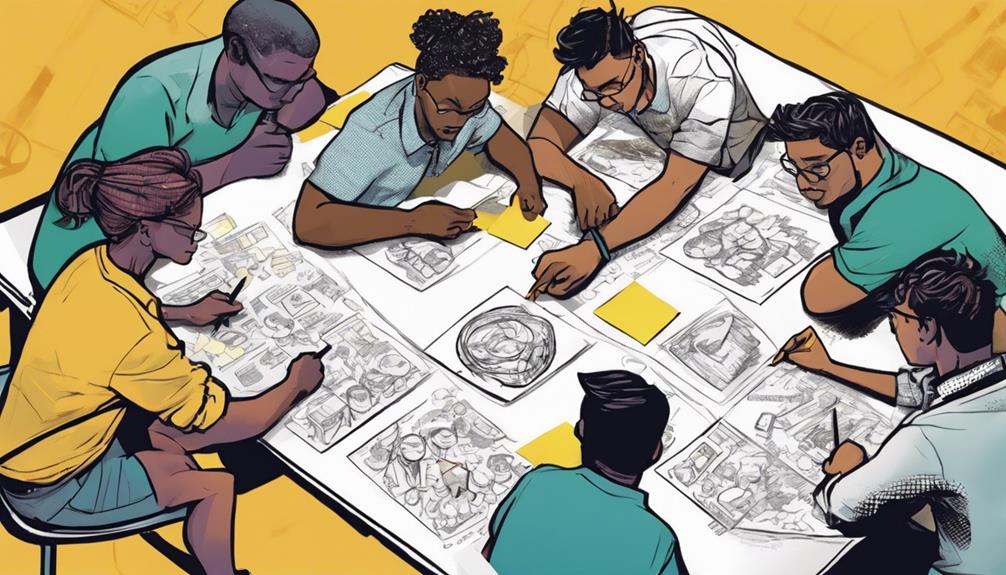
To achieve the end goal of Design Thinking, teams prioritize creating solutions that are desirable, feasible, and viable for users and organizations alike. This involves understanding and meeting user needs first, ensuring solutions can be realistically implemented, and guaranteeing profitability for the organization.
Here's a breakdown of the key components:
- User Needs: Design Thinking begins with empathizing with users to uncover their needs, preferences, and pain points. By focusing on desirability, teams can create solutions that truly resonate with users and address their underlying concerns effectively.
- Feasibility: Once user needs are understood, the next step is to assess the technical and operational feasibility of implementing the proposed solutions. This involves evaluating whether the resources, technology, and skills required for execution are available or can be acquired within a reasonable scope.
- Viability: Beyond desirability and feasibility, the final piece of the puzzle is ensuring that the solutions are financially sustainable and beneficial for the organization. Viability focuses on the profitability and long-term success of the proposed ideas, aligning them with the strategic goals of the business.
Desirability in Design Thinking
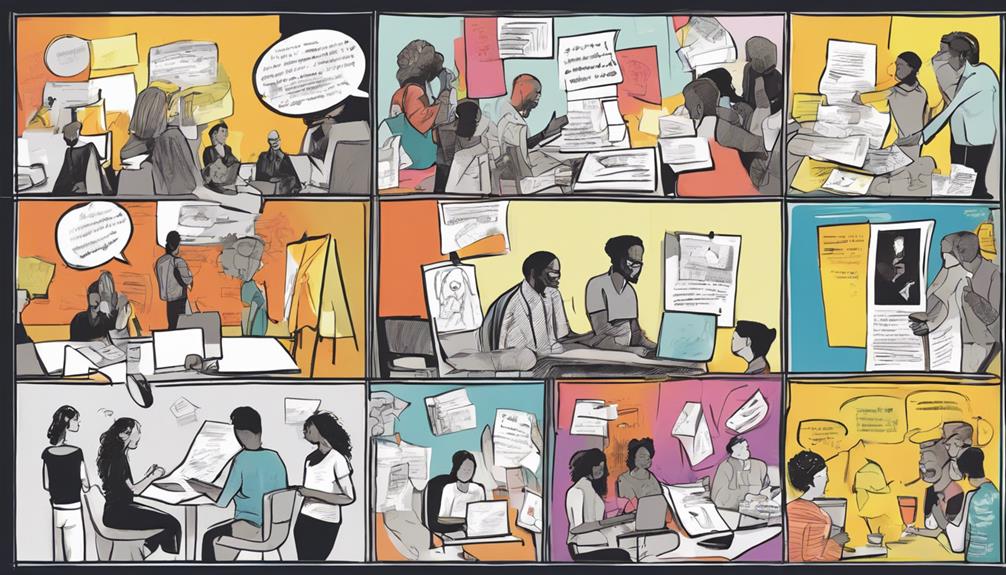
Exploring the domain of design thinking, your initial focus lies on grasping the desires and aspirations of the end users. In design thinking, desirability plays a pivotal role in creating solutions that resonate with users on a personal level. Understanding the needs, dreams, and behaviors of users is key to designing products or services that meet their expectations. By approaching design from the perspective of the end users, teams can guarantee that the solutions developed are tailored to satisfy their specific requirements.
Listening with empathy is a core aspect of uncovering what users desire in a product or service. This emphasis on desirability guarantees that the design solutions aren't only functional but also emotionally appealing to the users.
Starting the design process with desirability sets the foundation for successful outcomes, as it establishes a strong connection between the solution and the end users. Ultimately, placing importance on desirability in design thinking leads to the creation of products or services that truly address the users' needs and aspirations.
Feasibility in Design Thinking
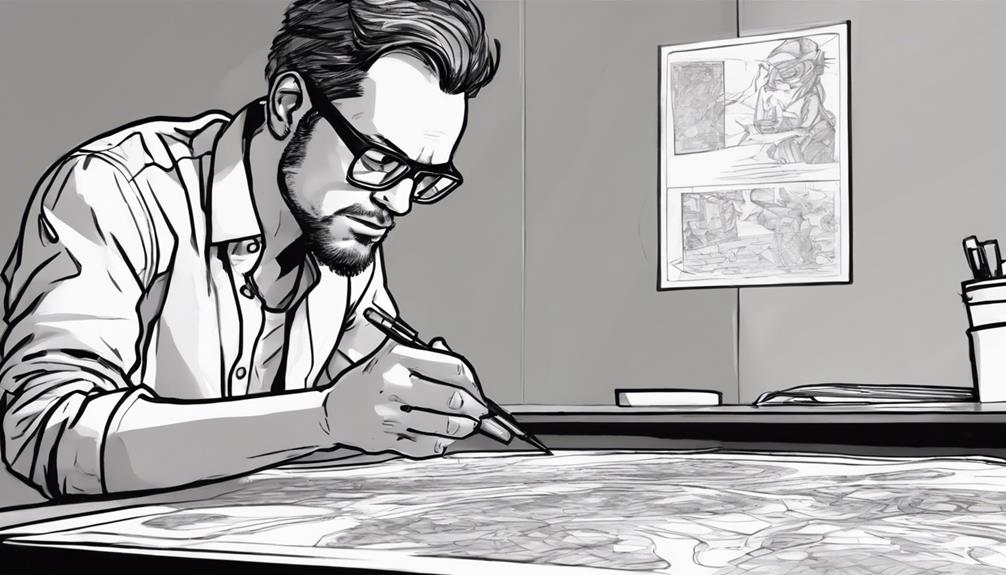
You need to ponder the feasibility evaluation considerations and assess technological implementation when exploring solutions in design thinking.
This evaluation helps you determine if your proposed ideas can practically be put into action with the resources available.
Feasibility Evaluation Considerations
Feasibility evaluation in design thinking routinely assesses the practical implementation of proposed solutions within existing technological constraints.
When considering feasibility in design thinking, keep these key points in mind:
- Resource Alignment: Evaluate if the proposed solutions align with the organization's current technological capabilities. This step guarantees that the solutions can be realistically implemented without requiring significant new resources.
- Capability Analysis: Assess the organization's internal capabilities to execute the proposed solutions. Understanding the existing skill sets and infrastructure helps in determining the feasibility of implementing the solutions effectively.
- Strategic Fit: Consider how well the proposed solutions align with the organization's strategic goals. Feasibility evaluation shouldn't only focus on technical aspects but also secure that the solutions contribute to the overall objectives of the organization.
Technological Implementation Assessment
Assessing the technological implementation of proposed solutions in design thinking involves measuring the organization's ability to leverage available resources effectively.
Feasibility assessment in design thinking entails scrutinizing the technological constraints and opportunities that could impact the implementation of innovative solutions. It's crucial to guarantee that technical limitations don't hinder the development and execution of creative ideas from the outset.
The primary goal of feasibility assessment is to determine whether the organization possesses the necessary means to translate the proposed solutions into reality. Feasibility, alongside desirability and viability, forms a critical triad in design thinking methodology, ensuring the successful execution of groundbreaking solutions.
By thoroughly evaluating technological feasibility, organizations can proactively address potential challenges and optimize their approach to bring innovative concepts to fruition.
Embracing a thorough assessment of technological implementation ensures that design thinking initiatives align with the organization's capabilities and strategic objectives, fostering a conducive environment for sustainable innovation.
Viability in Design Thinking

Evaluating the financial sustainability and profitability of a proposed solution is vital in design thinking methodology, ensuring the long-term success of the organization. When considering viability in design thinking, you should focus on three key aspects:
- Business Feasibility: Assess whether the proposed solution aligns with the organization's goals and objectives. Consider factors like market demand, competition, and potential for growth to determine if the solution is viable in the long run.
- Financial Sustainability: Evaluate the cost-effectiveness and revenue potential of the solution. Understanding the financial implications helps in creating sustainable business models that can support the solution over time.
- Scalability: Determine if the proposed solution can be scaled effectively as the organization grows. Scalability is pivotal for ensuring that the solution can adapt to changing market conditions and evolving customer needs, contributing to its long-term success.
Five Stages of Design Thinking
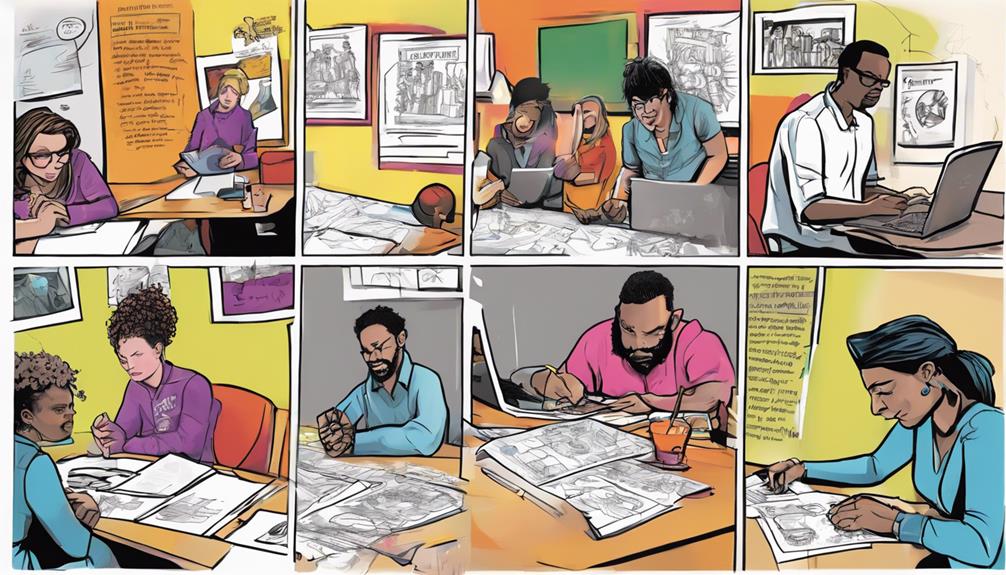
You'll explore the key points of Design Thinking Phases, Iterative Problem-Solving, and User-Centric Innovation in the upcoming discussion on the Five Stages of Design Thinking.
These aspects offer a structured yet adaptable framework for tackling challenges and fostering innovative solutions.
Design Thinking Phases
Understanding the Five Stages of Design Thinking can provide a structured approach to problem-solving and innovation.
- Empathize: This initial stage involves immersing yourself in the users' world, understanding their needs, and gaining insights through observation and research. It sets the foundation for the entire design process by focusing on the human-centric aspect of problem-solving.
- Define: Once you have gathered information during the Empathize stage, the Define phase helps you analyze and synthesize the data to define the core problem that needs to be addressed. It involves framing the problem statement based on user needs and insights, providing a clear direction for ideation.
- Ideate: In the Ideate stage, creativity takes center stage. This phase encourages brainstorming and the exploration of various solutions without limitations. It aims to generate a wide range of innovative ideas that could potentially solve the identified problem effectively.
Iterative Problem-Solving
The iterative problem-solving process in design thinking comprises five key stages: Empathize, Define, Ideate, Prototype, and Test. These stages are not strictly sequential; they can overlap and be revisited to foster innovative solutions. By adopting a user-centric approach, design thinkers explore understanding user needs deeply. Creative solutions emerge through brainstorming and ideation, followed by the creation of prototypes for testing. The iterative nature of design thinking allows for constant refinement and adaptation based on feedback, resulting in impactful, user-centered solutions.
| Empathize | Define | Ideate | Prototype | Test |
|---|---|---|---|---|
| Understand user needs | Define the problem | Brainstorm ideas | Build prototypes | Test solutions with users |
| Gather insights | Refine problem statement | Encourage creativity | Create tangible representations | Evaluate effectiveness |
| Develop empathy | Identify constraints | Explore possibilities | Test functionality | Gather feedback |
User-Centric Innovation
User-centered innovation drives the five stages of Design Thinking, guiding teams towards understanding user needs and creating impactful solutions. This approach places the user at the center of the design process, ensuring that products and services resonate with their intended audience.
By emphasizing empathy and user-centricity, Design Thinking fosters a deep understanding of users' motivations, preferences, and pain points. Through iterative processes, teams can continuously refine and enhance their solutions based on feedback, leading to more effective and user-friendly outcomes.
To achieve successful user-centric innovation in Design Thinking, consider the following:
- Empathize: Put yourself in the shoes of the users to truly understand their experiences and needs.
- Iterative Processes: Embrace a cycle of prototyping, testing, and refining to continuously improve solutions.
- User-Centric Innovation: Prioritize designing solutions that address user challenges and delight users with meaningful experiences.
Design Thinking Frameworks
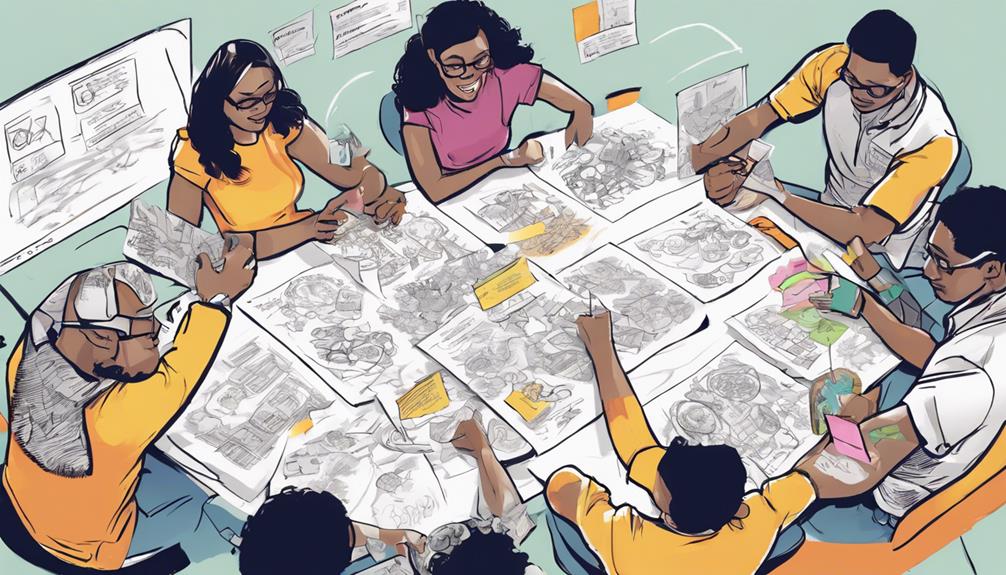
Design thinking frameworks serve as structured methodologies that guide problem-solving processes effectively. These frameworks, such as the 5-Stage Design Thinking Process, the Early Traditional Design Process, IDEO's 3-Stage Design Thinking Process, and the 4-Step Design Thinking Process, provide a roadmap for tackling challenges.
The Stages of Design within these frameworks typically include defining the problem, researching, ideating potential solutions, prototyping ideas, and making informed decisions.
One common model found in design thinking is the divergence-convergence model, where teams first explore a wide range of ideas (divergence) before narrowing down to the most promising solutions (convergence).
Various organizations have developed their own unique approaches to design thinking, like the Head, Heart, and Hand framework by AIGA and the DeepDive™ methodology by IDEO.
Design Thinking Mindsets
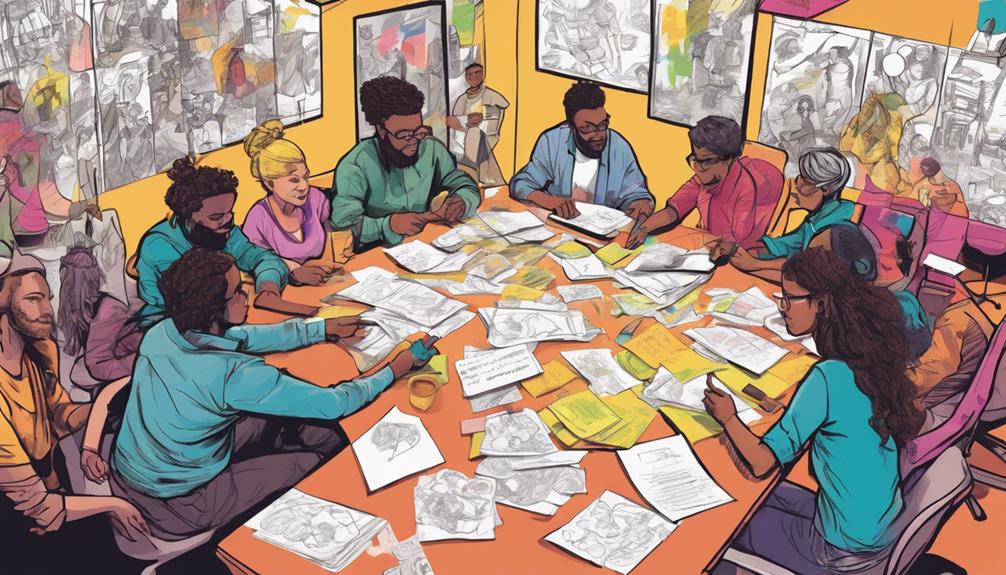
To approach problems innovatively and effectively, cultivating a mindset that prioritizes empathy, collaboration, and experimentation is essential. When embracing design thinking mindsets, you're encouraged to:
- Empathy: Understanding the needs, desires, and challenges of the end-users is foundational to design thinking. By empathizing with users, you can gain valuable insights that drive meaningful solutions tailored to their requirements.
- Collaboration: Working in cross-functional teams fosters diverse perspectives and expertise, leading to more inclusive problem-solving. Collaboration encourages collective ownership of ideas and promotes a supportive environment for creativity to thrive.
- User-Centric Approach: Design thinking emphasizes putting the end-user at the center of the design process. By focusing on the users' experiences, preferences, and feedback, you can create solutions that truly resonate with their needs, enhancing product usability and satisfaction.
Design Thinking Vs Agile

When comparing Design Thinking and Agile methodologies, it's important to note their distinct focuses and approaches in the iterative problem-solving process. Design Thinking centers around user-centered design, emphasizing empathy and deep research to understand user needs and define problems effectively.
On the other hand, Agile prioritizes collaboration and adaptability, aiming for rapid development and continuous delivery of working solutions.
While Design Thinking encourages exploration and experimentation to uncover innovative solutions, Agile focuses on efficient and incremental development to respond quickly to changing requirements. The two methodologies can complement each other in product development by combining the strengths of user-centered design with the rapid iteration and feedback cycles of Agile.
In essence, Design Thinking and Agile offer unique perspectives on the iterative process, with Design Thinking delving into user empathy and problem definition, while Agile excels in collaboration and adaptive development practices. Integrating these methodologies can enhance the overall product development process, bridging the gap between understanding user needs and delivering effective solutions efficiently.
Frequently Asked Questions
What Is the Methodology of Design Thinking?
The methodology of Design Thinking is a user-centered problem-solving approach. It involves stages like Empathize, Define, Ideate, Prototype, and Test. You focus on understanding user needs, generating creative solutions, and testing prototypes iteratively for innovative outcomes.
What Is the Discovery Stage of Design Thinking?
In the discovery stage of design thinking, you explore deeply into user needs through research like interviews and observations. Gather insights to define the problem accurately and set the foundation for crafting user-centric solutions.
What Is Stanford's Design Thinking Methodology?
Stanford's Design Thinking methodology involves five stages: Empathize, Define, Ideate, Prototype, and Test. It's a human-centered approach that prioritizes user needs and fosters innovation. The process is iterative, allowing for flexibility and creativity.
What Are the Stages of Design Thinking Methodology?
To understand the stages of design thinking methodology, empathize with users, define the problem, brainstorm ideas, create prototypes, and test them. Remember, these stages aren't always in order and can be revisited for better outcomes.
Conclusion
You've just scratched the surface of the powerful design thinking methodology. By embracing this innovative approach, you can transform your problem-solving skills and create truly game-changing solutions.
With design thinking, the possibilities are endless and the results are beyond extraordinary. So go ahead, dive deeper into this world of creativity and watch as your ideas flourish like never before!
